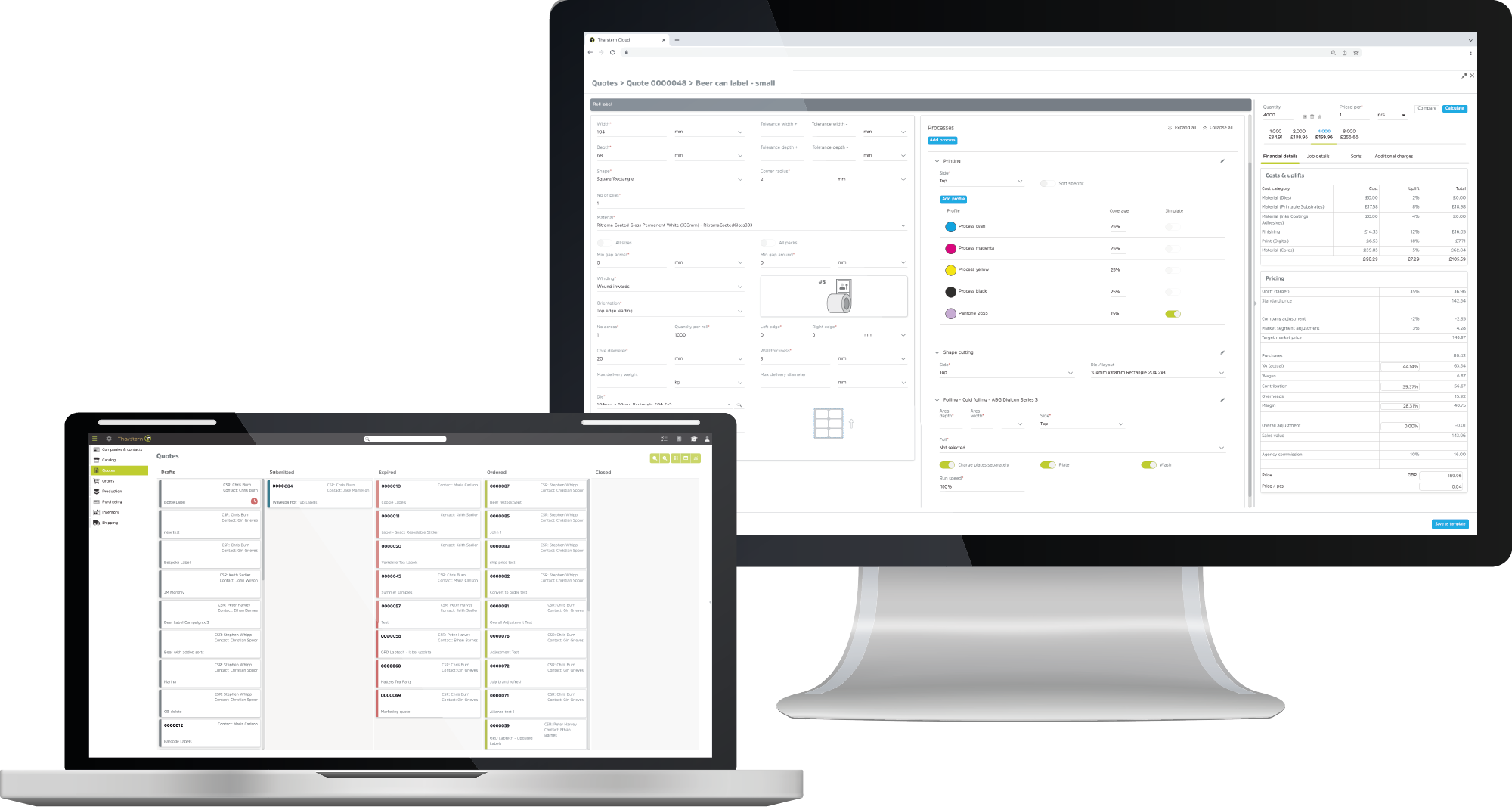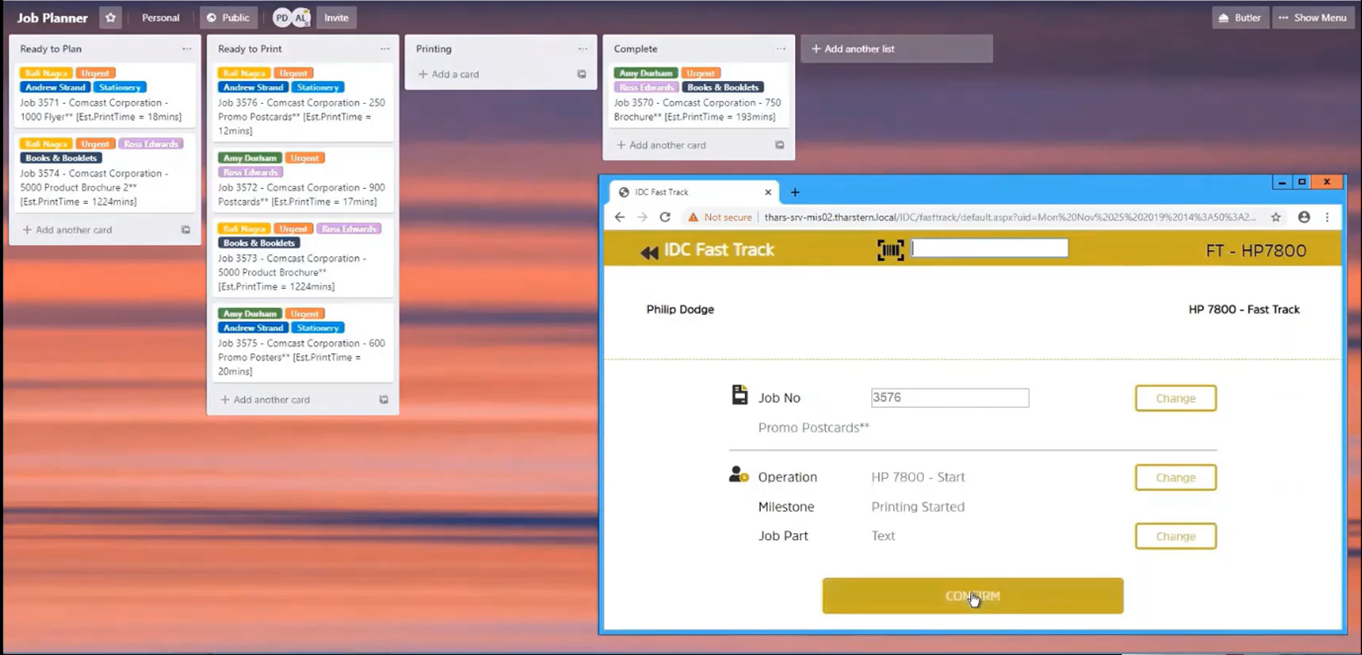5 challenges label converters face that MIS software could solve
Are you a label printer struggling to keep up with the demands of your customers? It might be time to look at implementing an MIS system in your business.
In this article, we look at 5 specific challenges that label MIS software would help your business solve. From streamlining production processes to improving communication between departments, this type of software can help take your business to the next level.
In case you haven’t heard of MIS software before, or aren’t sure what it means, let’s start at the beginning.
What is a label MIS?
Put simply, a Management Information System (MIS), sometimes known as an ERP, is a piece of software used to automate your business processes. It acts as the central hub for your workflow, making it easier to manage every department of the business from one place.
By automating your data and processes, you’re removing the need to manually calculate estimates and track orders with a spreadsheet. Instead, everything you’ll need is stored in your MIS.

So, what are the common challenges that label converters face, that an MIS system could help to resolve, we hear you ask? Let’s get into it…

Disconnected workflows
If each department in your business is using different software applications, it’s likely your employees are spending way too much time manually rekeying data from one system to another.
With an MIS system, you won’t have this issue. You’ll be using one central system to process all your estimates, orders, and shipments, so you won’t have to duplicate work! You can even connect your MIS with your financial accounts packages (among other things), so all the data seamlessly feeds back into the system for every department to access.
No more valuable time being taken up re-keying data!

Data is hard to find, or worse, is missing
When you have data scattered across different systems, it makes it much harder to pull information together when you need it. You might find that…
- Necessary data is missing and has gone unnoticed
- Estimates take much longer to put together, causing response delays
- Production and set-up times become much longer
…all because your data is unorganized!
The data inside your MIS is incredibly valuable and can help you better understand your business, industry, customers, and trends. So it's really important that your data is reliable and easily accessible.

With a label MIS, data from across your entire workflow can be centralized in one place and collected in real time, making it much easier to extract and analyze.
Tharstern Cloud, our MIS for label and flexible packaging businesses, also has built-in performance dashboards, so you can review how your business is performing against sales targets.

Dies and tools are unorganized
You could potentially have thousands of different dies in your library, but no system to track and store them. If that’s the case for your business, then you could be missing opportunities to save money and re-use them for different jobs.
If you invest in an MIS with a centralized database that stores die-cut specifications, it can auto-check your existing dies while you quote for a new job, to see if you already have something that will work. If there’s no exact match, you can change the tolerance to find a close alternative that you can discuss with the customer, making the job cheaper to produce. And in cases where you need a brand-new die, the software can suggest a range of possibilities for you to consider.
Having a die library integrated with the MIS software also makes it easier to transfer die-cut specifications to the production process, so jobs can be produced more efficiently.

Lack of communication between departments
For label converters without MIS software, effective communication can be a challenge. Maybe each department is working separately, or important information isn’t easily accessible to others who need it.
However, with an MIS, all project-related information is kept in one centralized place, meaning everyone has access to the information they need to do their jobs. It also ensures that everyone throughout the business is working with the most up-to-date information and reduces the need for duplicate data.

You can also help improve communication between departments using Tasks. From within the MIS, you can set tasks for your colleagues with due dates, reminders, and space to specify required actions.

If you’re using spreadsheets or non-industry-specific solutions to produce quotes, you might find the information you’re getting back isn’t as accurate as you’d like.
If you’re producing quotes without purpose-built software to assist you, you might notice…
- Inconsistencies in pricing
- Quotes take a long time to produce
- Not all costs are considered when calculating a price
But with an MIS solution, you’re given full control of your pricing strategy and are presented with all potential costs for every job. You can also apply across-the-board profit margins, or even add them by sector, customer, or product.
With Tharstern Cloud, users can even create templates for when products are re-ordered, which include agreed prices and product specifications. This functionality makes it much quicker and easier to quote for a job.
Hopefully, this article has shown you how an MIS can help label printers overcome common challenges, improve business processes, and stand out from competitors.
Implementing an MIS can be a big step, but the benefits are clear. Maybe now is the time for you to take that next step…
Share this
You May Also Like
These Related Stories

Using Trello to plan and track jobs instead of a scheduling board

Customer Relationship Management – 5 good reasons to use a CRM


